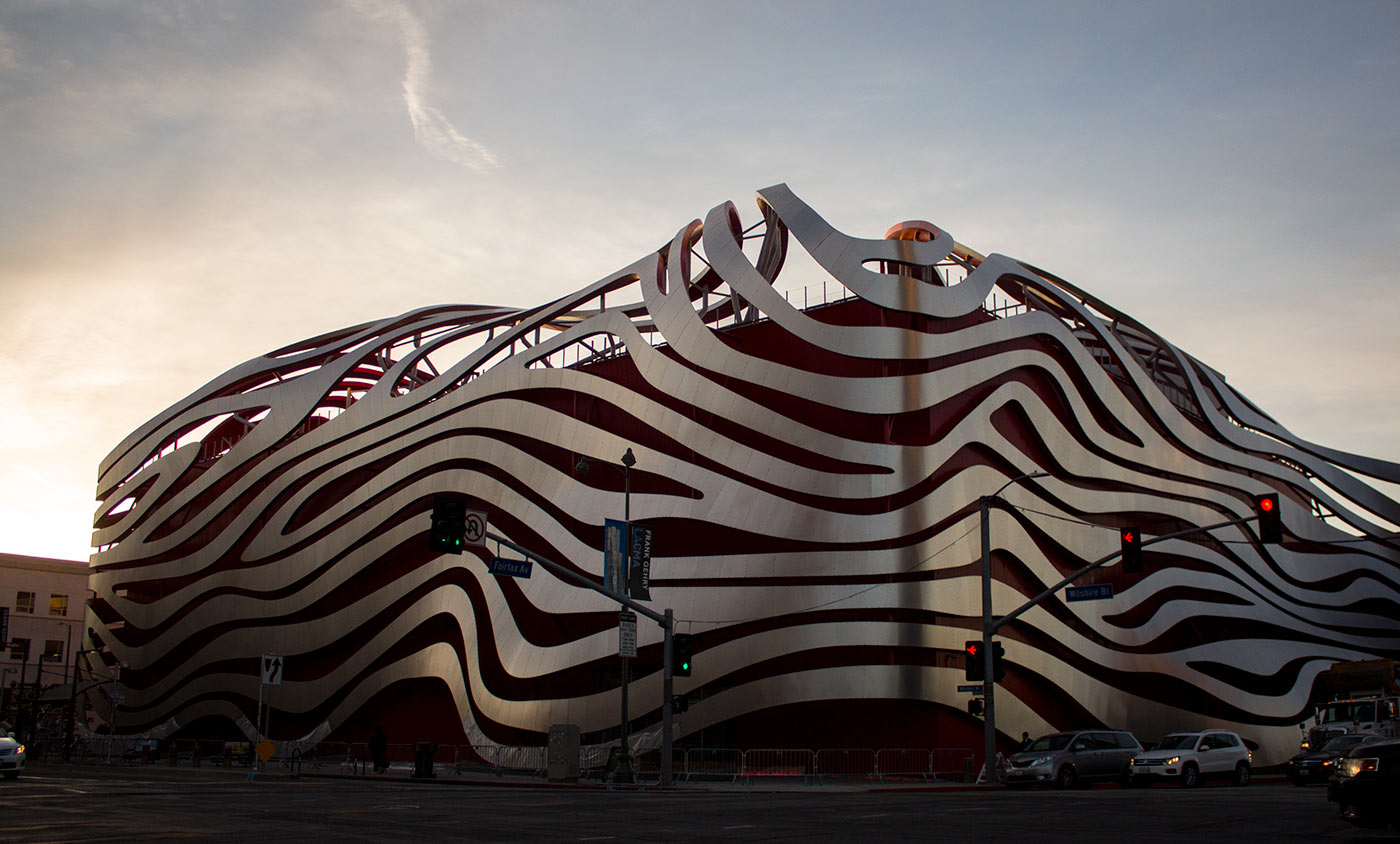One Day is Not Enough for the New Petersen
The Petersen Automotive Museum shut down for renovations over a year ago. When it officially closed its doors to the public, the museum was caught in a public relations battle because it had sold part of its collection (mostly common cars) and some accused the museum of pandering to a disconnected board and turning away from its good ol’ American roots in favor of French esoterica. After all, Johnny Rockets was going away and a swanky new restaurant (Drago, which is Italian, by the way) was going to fill its spot. The horror.
Earlier this week, the remodeled Petersen Auto Museum opened its doors to the public and the verdict is? Well, frankly, it’s mixed. But only in the most superficial terms, quite literally—some don’t love the new façade. Everything inside, from the food to the precisely curated collection to the museum’s top-down layout (you begin on the third floor and work your way downstairs), is drawing top marks. At the media launch, one person was overheard commenting that, “My God, even the [typeface] used for descriptions on the wall looks superb.”
Typefaces are all well and good, but no one will be visiting the Petersen to check out such minutia. So what’s changed? If you ever had a chance to visit the “old” Petersen, you’ll probably recall how dark it was and how it seemed as though there were little nooks throughout the building, seemingly designed for playing hide-and-seek. When the original museum was laid out in 1994, in the guts of a former department store, modifications to the existing structure were minimal and exhibits were placed where there was room, well-lit or not. This time around much of the space was gutted, allowing for grand halls and long open views of the collection, regardless of what floor you’re on.
But the Museum isn’t all daylight and air, some of the exhibits are purposefully kept dark to create a more serious mood. Fortunately, the claustrophobia is gone though. Currently — and the cars will be rotating periodically — as you enter the Petersen the first three vehicles you see are the “Round Door” Rolls-Royce, a Bugatti Veyron with a splashy paint job, and a Dodge Tomahawk (you know, the motorcycle powered by a V-10 Viper engine?). Buy your tickets then head upstairs to the third floor (the History floor) where you’ll find the Hollywood Gallery (featuring Elvis Presley’s DeTomaso Pantera, Walter White’s Pontiac Aztec, one of the Batmobiles — the Michael Keaton one — and Magnum PI’s Ferrari 308, among others), the very first AMBR winner — the Niekamp Roadster, some 1950s American concept cars, and a “hands-on” Ford Model T that you’re allowed to jump into. There’s also a 1927 Indian Big Chief formerly owned by Steve McQueen and a gorgeous ’56 Chevy Bel Air.
Heading down to the Industry floor, which describes the automotive process from design to manufacturing, one immediately sees Art Center College of Design students hard at work. You see, the museum includes a studio for Art Center transportation design students to sketch, pull clay, and work on their digital models for school. These people are the future of the industry and you might just get a sneak peek of what that future will look like.
The Industry floor also features the Discovery Center for children, allowing them to build and race a car of their design, virtually, while being helped along by characters from the movie Cars. This can take a while so make sure you plan accordingly, as you don’t want to set off a meltdown if your child doesn’t get to complete his or her racecar.
The real gems on the second floor however are the Precious Metals (a temporary exhibit) and Customization Galleries. Precious Metals is full of extremely limited-production cars (most are one-offs) such as the 1959 Chevy Corvette XP-87 Stingray racer. The latter includes the Barris-built Hirohata Mercury, Cadzilla, and the Doane Spencer Roadster.
Finally, back down on the ground floor (the Artistry floor), the sweeping main gallery showcases custom-bodied cars, err, sculptures in all their glory. Some of the cars in this space were gifts to nobility and others were playthings for starlets, but the common thread is that they are all the ultimate expression of pre-war hand-built, cost-no-object automotive art.
Throughout the museum you’ll find interactive displays, automobilia and knowledgeable docents. We spent about eight hours there but easily could’ve returned the following day and still not seen or read everything. You too could probably go through the Petersen in a day, but why would you want to? Take your time and if you still find yourself craving more, the Petersen’s Vault tours are an option.
The new Petersen is an undeniable success and the concern that preceded the project seems laughable now. This is a museum for people who love cars, all cars, and are eager to learn and see more. But don’t just take our humble word; CNN has ranked the Petersen the best car museum in the world, and one of only two American auto museums in its top ten.


